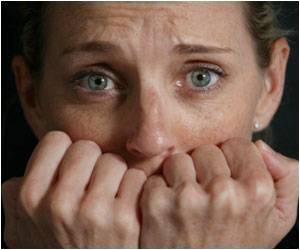Dreams help us react better to frightening situations, thereby paving the way for new dream-based therapeutic methods for combating anxiety.

‘A possible link between the fear experienced during a dream and the emotions experienced once awake discovered.’





Neuroscience has been taking an interest in dreams for a number of years, focusing on the areas of the brain that are active when we dream. The scientists employed high-density electroencephalography (EEG), which uses several electrodes positioned on the skull to measure brain activity. They recently discovered that certain regions of the brain are responsible for the formation of dreams, and that certain other regions are activated depending on the specific content within a dream (such as perceptions, thoughts and emotions). "We were particularly interested in fear: what areas of our brain are activated when we're having bad dreams?» states Lampros Perogamvros, a researcher in the Sleep and Cognition Laboratory headed by professor Sophie Schwartz in the Department of Basic Neurosciences, Faculty of Medicine, UNIGE, and senior clinical lecturer at HUG's Sleep Laboratory.
Brain areas active during frightening dreams
The scientists from Geneva placed 256 EEG electrodes on 18 subjects whom they woke several times during the night. Each time the participants were woken up, they had to answer a series of questions such as: 'Did you dream? And, if so, did you feel scared?'
"By analysing the brain activity based on participants' responses, we identified two brain regions implicated in the induction of fear experienced during the dream: the insula and the cingulate cortex", explains Perogamvros. The insula is also involved in evaluating emotions when awake, and is automatically activated when someone feels afraid. The cingulate cortex, for its part, plays a role in preparing motor and behavioural reactions in the event of a threat. "For the first time, we've identified the neural correlates of fear when we dream and have observed that similar regions are activated when experiencing fear in both sleep and wakeful states", continues the Geneva-based researcher.
Advertisement
They gave a dream diary to 89 participants for the duration of a week. The subjects were asked that each morning upon waking, they note down whether they remembered the dreams they had during the night and to identify the emotions they felt, including fear. At the end of the week, they were placed in a magnetic resonance imaging (MRI) machine. "We showed each participant emotionally-negative images, such as assaults or distressful situations, as well as neutral images, to see which areas of the brain were more active for fear, and whether the activated area changed depending on the emotions experienced in the dreams over the previous week," says Virginie Sterpenich, a researcher in the Department of Basic Neurosciences at UNIGE.
Advertisement
Dreams: a new therapeutically?
Following the revelation of a potential function of dreams, the researchers are now planning to study a new form of dream therapy to treat anxiety disorders. They are also interested in nightmares, because - unlike bad dreams, in which the level of fear is moderate - nightmares are characterised by an excessive level of fear that disrupts sleep and has a negative impact on the individual once awake. "We believe that if a certain threshold of fear is exceeded in a dream, it loses its beneficial role as an emotional regulator," concludes Perogamvros.
Source-Eurekalert












